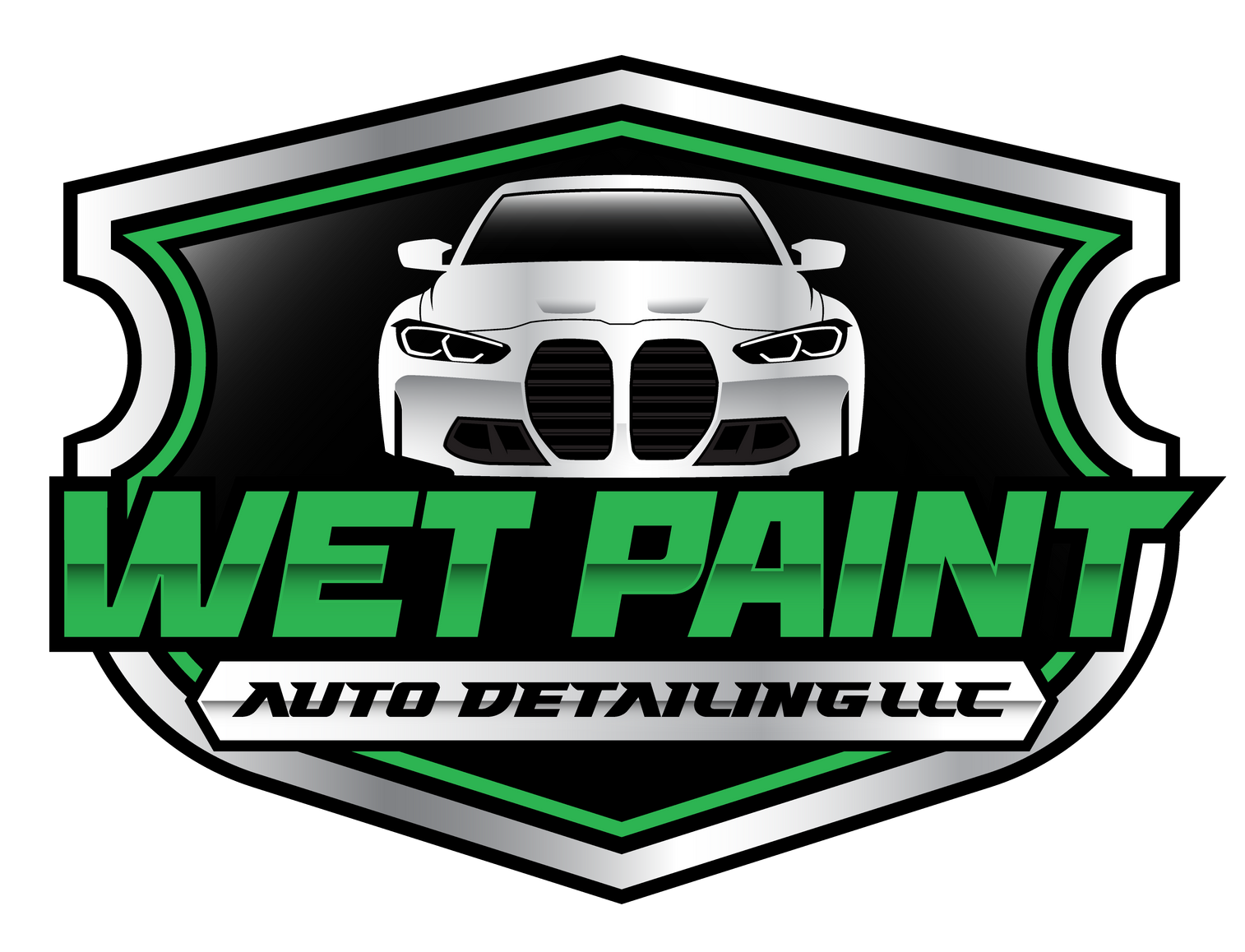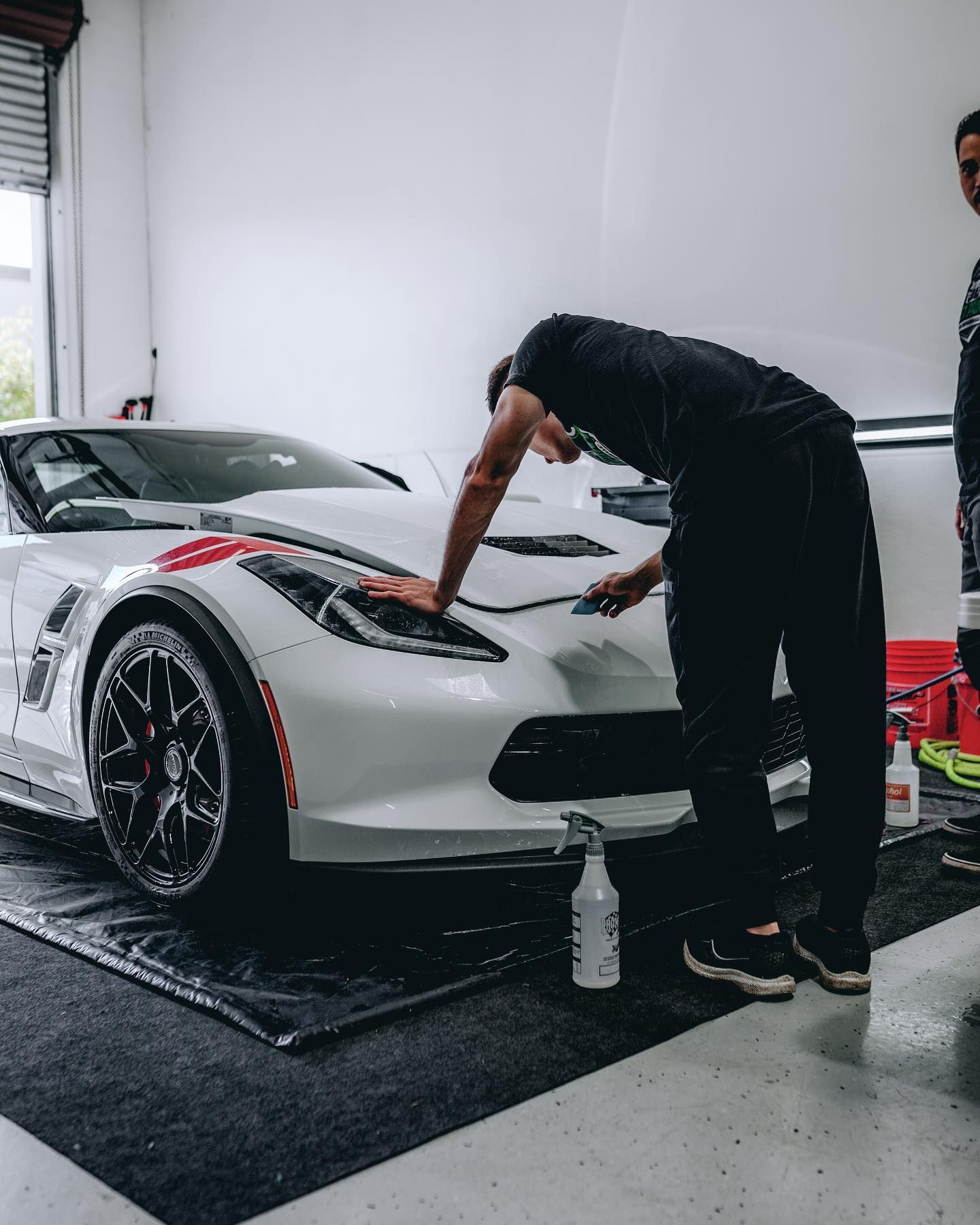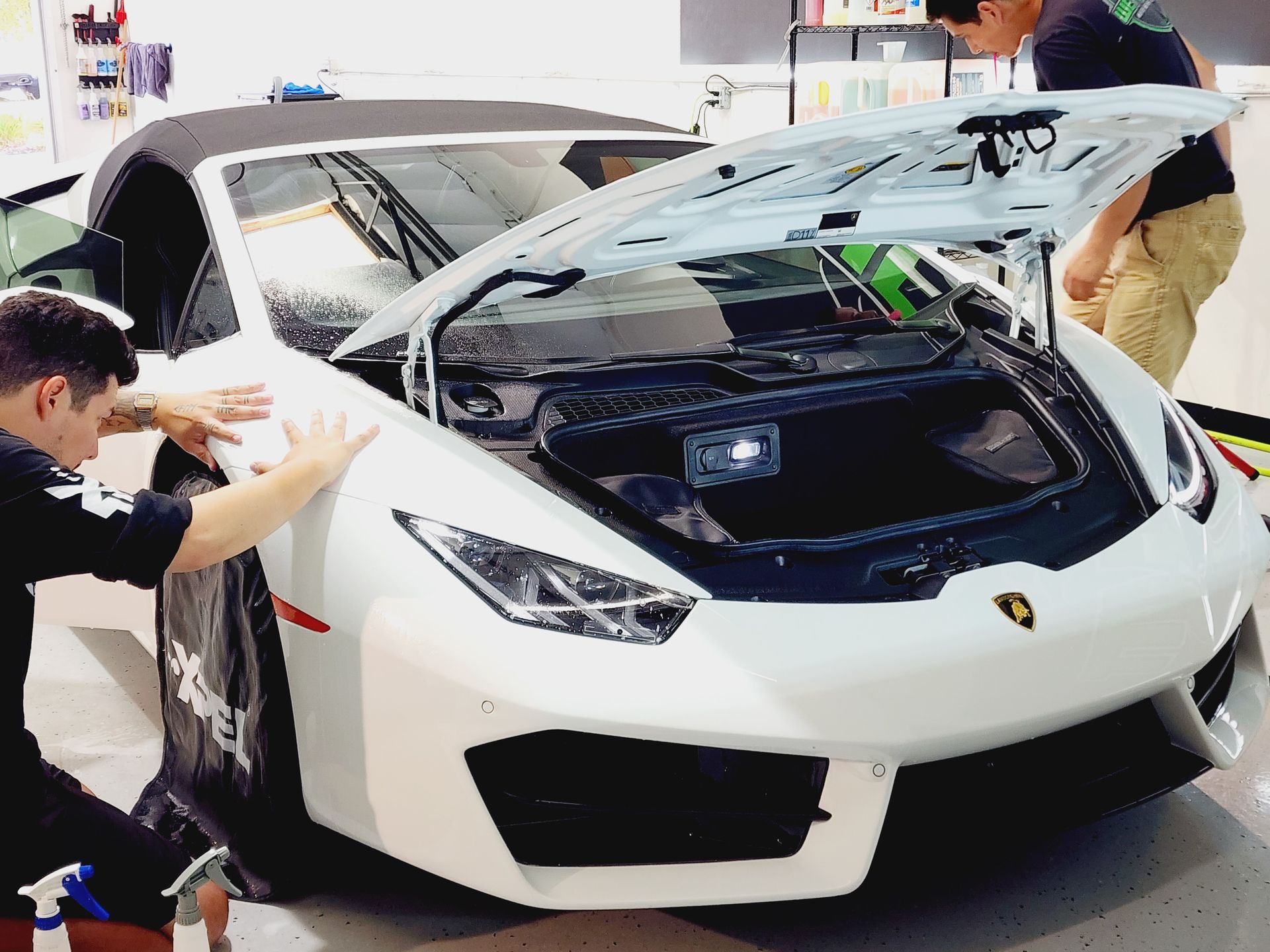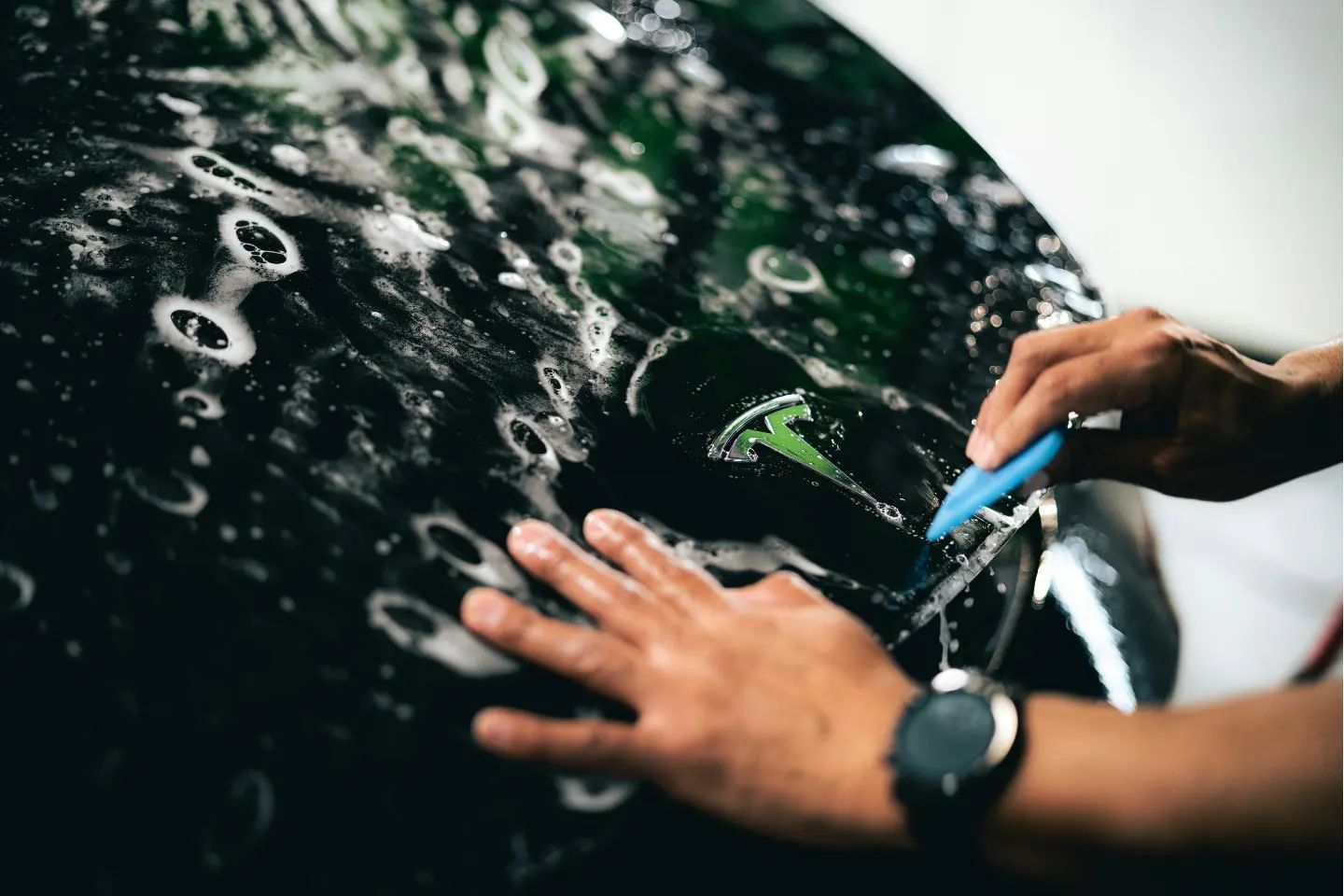When it comes to protecting your car’s paint, many drivers want to know how long the protection will last and how to care for it. A paint protection film is becoming a popular choice because it offers a shield against scratches, chips, and environmental damage. But just like buying a new phone case, it’s not just about picking one off the shelf; understanding its lifespan and maintenance plays a big role in keeping your car looking great for years.
The typical lifespan of a paint protection film can range from 5 to 10 years, depending on factors such as the quality of the film, professional installation, and environmental exposure. Proper maintenance, including regular cleaning with PPF-safe products, can significantly extend the life of the film.
Factors Affecting Paint Protection Film Longevity
The durability of paint protection film depends on various factors, including its material quality, installation, and usage conditions. Understanding these elements helps you maximize your investment, ensuring your vehicle stays protected and looks stunning for years. Let’s break down these key aspects to explore how they influence PPF longevity and performance.
- Material Quality and Lifespan: High-quality paint protection films from reputable brands often last 5 to 10 years, while lower-grade options may only endure 2 to 3 years. Premium films feature advanced materials that resist yellowing and cracking, keeping your car’s finish pristine. Investing in superior PPF saves money in the long term by reducing replacement needs.
- Professional Installation: Proper installation by experienced technicians extends the lifespan of paint protection film compared to DIY applications. Certified professionals ensure the film adheres seamlessly, preventing issues like peeling or bubbling. This expertise enhances both the aesthetic and protective qualities of your vehicle’s PPF, avoiding future complications.
- Driving Frequency and Conditions: Cars driven daily face harsher conditions, causing quicker wear on PPF compared to vehicles used occasionally and stored in garages. For example, commuter vehicles may show significant paint protection film degradation after 3 years, while weekend-only cars maintain their protection for 5 years or more. Usage habits play a major role in determining durability.
- Environmental Exposure: UV rays, extreme temperatures, and corrosive substances like bird droppings or tree sap accelerate PPF wear. Vehicles parked outdoors continuously may experience up to 30% faster degradation compared to those stored indoors. Regular care, including touchless washes and avoiding abrasive cleaning methods, helps preserve your paint protection film.
By focusing on factors like material quality, professional installation, driving habits, and environmental care, you can ensure your PPF offers maximum protection and value. With these insights, it's clear why investing in quality and expertise is essential for maintaining your vehicle’s stunning appearance and defense.
Quality and Installation Importance
The choice of film and the skill of the installer fundamentally shape your PPF's longevity. When selecting a paint protection film, don't just settle for the cheapest option; instead, opt for reputable brands known for their durability and effectiveness. Moving from the choice of material, let’s consider the second half of this equation—the installation process itself.
Choosing High-Quality Film
Choosing a high-quality paint protection film (PPF) is only part of the equation; ensuring it’s installed by skilled professionals is equally important. A certified installer can make all the difference, delivering seamless application and maximizing the film's durability. Here are the key factors to consider when selecting a PPF installer.
- Certifications: Always opt for installers certified by the PPF manufacturer. These certifications demonstrate expertise in applying the film without bubbles or wrinkles, ensuring adherence to industry standards. A certified paint protection film installer guarantees a higher level of professionalism and quality.
- Portfolios of Past Work: Inspecting the installer's portfolio provides insight into their attention to detail and overall skill. Much like reviewing an artist’s portfolio, this helps you determine whether their work meets your expectations. A solid track record of successful installations reflects their reliability and craftsmanship.
- Customer Reviews: Customer feedback offers a wealth of information about an installer’s reliability and professionalism. Positive reviews often highlight meticulous techniques that enhance the film’s longevity. Additionally, testimonials can provide insights into customer service, turnaround times, and overall satisfaction.
Even the highest-quality paint protection film can fail prematurely if improperly applied, leading to issues like peeling or bubbling. Skilled hands ensure the product performs as intended, safeguarding your vehicle against damage. Taking the time to select the right film and a qualified installer protects your investment over the long term. By prioritizing certifications, portfolios, and customer reviews, you can find a trustworthy installer who guarantees excellent results. With proper installation, your PPF will not only look seamless but also provide enduring protection against the challenges of daily driving.
Environmental Impact on PPF
The environment where your vehicle resides plays a pivotal role in determining the lifespan of your paint protection film (PPF).
UV Exposure
The harshness or mildness of local weather, UV exposure levels, and even pollutants in the air can greatly influence the integrity of the film over time. For instance, if you live in a sunny area, your paint protection film might face more significant challenges from ultraviolet rays, which degrade clarity and adhesion after prolonged exposure. Over time, this exposure can lead to visible effects such as yellowing or bubbling, diminishing the effectiveness of the protection it provides.
Thus, if your car is constantly basking in the sun, think about how much benefit you may gain from investing in a garage or using a quality car cover when you’re not driving. This simple preventive measure can significantly extend the life of your PPF. Moreover, it’s not only direct sunlight that poses risks; reflections from nearby surfaces and heat buildup can also threaten the film's longevity. Metal surfaces reflecting sunlight can intensify this effect even more. Maintaining awareness of where you park can contribute to prolonging the life of your protective film.
Weather Conditions
Similarly, adverse weather conditions also take their toll. Whether it's snow, sleet, or rain, each element can impose harsh variables upon your PPF. Vehicles subjected to heavy snow and ice tend to require paint protection film replacement years earlier than cars residing in milder climates due to physical damage and chemical interactions with the film. Notably, during freezing temperatures followed by thaw cycles, PPF materials expand and contract rapidly. This variability can lead to heightened susceptibility to peeling and lifting at the edges if not properly applied.
What’s perhaps less considered is how humidity affects paint protection film. Extended exposure to high humidity can create favorable conditions for mold and mildew growth on PPF surfaces. While these might appear unsightly initially, consider their potential long-term impacts on your vehicle's finish—exposure could degrade performance over time if left unchecked. Sheltering your vehicle whenever possible can mitigate environmental wear; being mindful of how you care for it amidst various weather conditions will enhance its longevity significantly.
Maintenance Tips for Extending PPF Life
Maintaining your paint protection film is crucial for ensuring it continues to protect your vehicle and retain its aesthetic appeal. By following proper care techniques, you can extend the lifespan of your PPF and keep your car looking its best. Below are key tips for maintaining your paint protection film, broken down into actionable categories:
- Regular Cleaning Practices: Keeping your paint protection film clean is vital to preserving its appearance and protective qualities. Use mild, pH-neutral cleaning agents designed specifically for car care, as harsh chemicals can degrade the film. Clean with soft, non-abrasive cloths or sponges to prevent scratches and maintain clarity.
- Proper Washing Techniques: Avoid automatic car washes with abrasive brushes, which can peel or lift the film’s edges. Opt for touchless car washes or handwashing at home, allowing you to monitor and care for each section of your vehicle with precision. Treat this task as an investment in preserving your vehicle’s value.
- Routine Inspections: Regularly check the edges of your paint protection film for peeling or lifting. Early detection and immediate professional assistance can prevent dirt or moisture from seeping underneath the film, avoiding costly damage. Routine inspections of your PPF can save you time and money in the long run.
- Protective Measures for Longevity: Parking your car in a garage or shaded area shields the paint protection film from harsh sunlight and weather, reducing potential damage. For high-impact activities like track days, applying temporary "roll-on" PPF over the existing film provides extra protection without harming the original layer.
- Scheduled Maintenance Checks: Conduct inspections every six months to identify and address wear early. This proactive step can extend the life of your paint protection film, ensuring it continues to safeguard your vehicle’s paint for years.
By adopting these maintenance strategies, you can maximize the longevity and performance of your paint protection film, keeping your vehicle in top-notch condition while protecting your investment.
Comparing PPF Longevity to Alternatives
Choosing the right protection for your vehicle's paint involves understanding the durability and type of defense each option provides. From long-lasting paint protection film to cost-effective waxes and sealants, each solution has its advantages and limitations. Here's a breakdown to help you decide:
- Paint Protection Film: A paint protection film offers the most durable defense, lasting 5 to 10 years. Its strong resistance to scratches and chips makes it an excellent choice for vehicles exposed to road debris and harsh weather. Although the initial cost is higher, its longevity and low maintenance needs make it a cost-effective solution over time.
- Ceramic Coatings: Ceramic coatings chemically bond to your vehicle’s paint, providing a lifespan of 2 to 5 years. While they offer decent protection against environmental elements, they do not prevent scratches and chips compared to PPF. This makes them ideal for those prioritizing shine and hydrophobic properties over physical protection.
- Wax and Sealants: Wax and sealants are affordable and easy-to-apply options, popular with DIY enthusiasts. However, their effectiveness is short-lived, requiring reapplication every 3 to 6 months. While the upfront costs are low, the ongoing maintenance can add up, making them less economical in the long run.
Comparing Scratch Resistance
When it comes to resisting scratches, a paint protection film stands out as the superior option. If your vehicle is frequently exposed to debris or harsh weather, PPF can save you time and money by minimizing repairs and touch-ups. In comparison, ceramic coatings and waxes provide limited protection in this area.
Longevity and Maintenance
Investing in a high-quality paint protection film reduces the need for frequent reapplications and repairs, making it the most economical choice for long-term protection. Understanding the maintenance requirements of each option can help you select the best fit for your vehicle care goals.
Maximizing Value from Paint Protection Film
To truly benefit from your investment in paint protection film, it’s essential to think beyond just the initial application. The durability and performance of PPF can be influenced by a number of factors that either enhance or diminish its lifespan. By understanding these key aspects, you can maximize both its effectiveness and longevity, ultimately safeguarding your vehicle's appearance for years to come.
- Cost-Benefit Analysis: One of the first considerations is a cost-benefit analysis of installing PPF. While high-quality paint protection film comes with a steeper initial price tag, this should be weighed against potential savings on paint repairs and maintenance over time. A single minor scratch from road debris can sometimes cost hundreds of dollars to repair. A well-maintained PPF serves as a protective barrier, potentially saving you money on multiple occasions throughout its lifespan. Moreover, preserving your car's original paintwork through effective protection can also enhance its resale value.
- Application: Next, consider the choice between DIY application and professional installation. Although applying paint protection film yourself may seem like a cost-saving option initially, improper installations can lead to bubbles, misalignment, or even damage to the underlying paint. These mistakes not only degrade the film’s protective properties but also lead to early replacement costs—ultimately negating any initial savings. Conversely, professionals possess the skills and experience necessary for accurate application, which translates into longer-lasting results that provide better protection.
- Implementing Maintenance Strategies: Simple yet effective maintenance strategies are paramount when maximizing the value derived from your paint protection film. Regular hand washing with pH-neutral soaps ensures embedded grime doesn't take root and cause degradation. Harsh chemicals can break down the bonds of paint protection film prematurely, so it’s vital to stick with products specified for automotive use.
By integrating these care tips into your routine alongside strategic installations, you can stretch your investment further while enjoying peace of mind knowing your vehicle looks pristine and remains safeguarded from everyday wear and tear. Investing in quality PPF, whether installed professionally or maintained diligently at home, is an effective way to keep your vehicle looking great over the years.
Seamless Paint Protection Film Application in Roseville, CA
Shield your vehicle from everyday hazards with Wet Paint Auto Detailing's
exceptional paint protection film services in Roseville, CA. Our precision installations ensure your car stays protected from road debris, scratches, and environmental damage while preserving its flawless finish. Using premium materials and expert techniques, we deliver results that blend seamlessly with your vehicle’s original appearance. Trust our team to safeguard your investment with a level of care that sets us apart. Schedule your appointment today and experience the ultimate in durable, invisible protection. Call us at (916) 918-2289 to get started!







